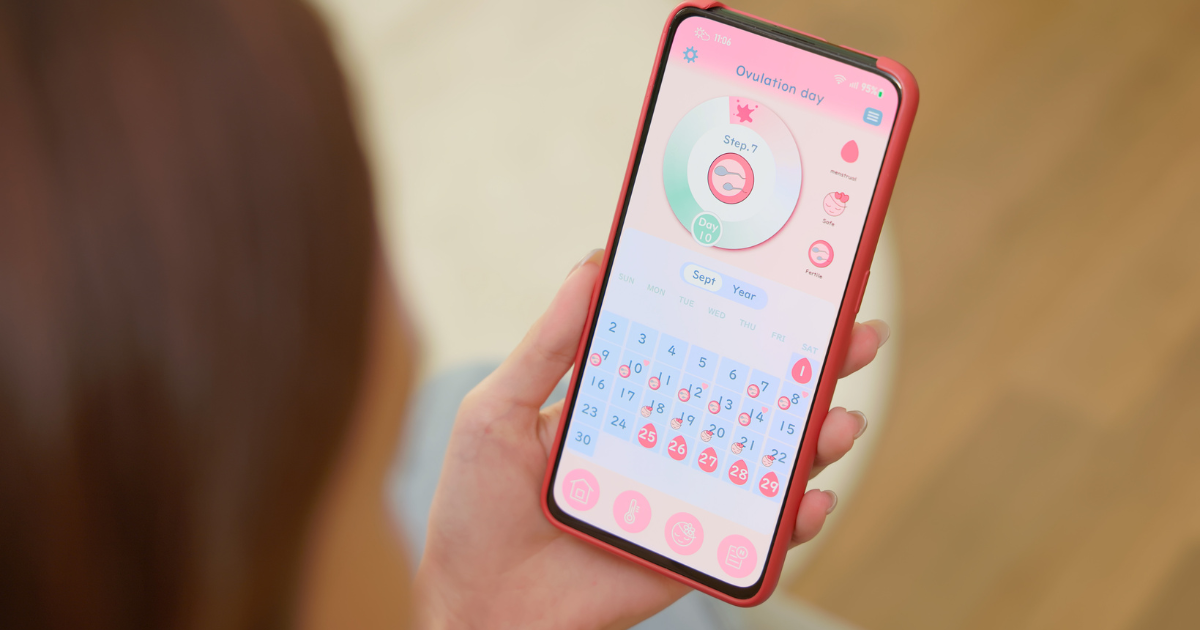What are the phases of the menstrual cycle, and how do they affect your body?

A woman will have, on average, 450 menstrual cycles throughout her lifetime. These normal, cyclic changes prepare the body for fertilization and pregnancy.
“Menstruation typically starts at puberty and ends at menopause,” explains certified nurse-midwife Heather Ramsey, APRN-CNM. “The first period usually occurs around age 12 or 13. Menopause is one year after the last menstrual cycle.”
Each month, ovaries release an egg during ovulation. Hormonal changes prepare the uterus for pregnancy. If the egg isn't fertilized during ovulation, the lining of the uterus sheds through the vagina.
The menstrual cycle begins with the first day of bleeding, which is counted as day one. Cycles typically last between 21 to 38 days. However, they are different for everyone and may vary from month to month. Your period is still considered regular if it occurs every 21 to 38 days.
The three phases of the menstrual cycle are:
Follicular or proliferative phase – before the egg is released.
Ovulatory phase – when the egg is released.
Luteal or secretory phase – after the egg is released.
What happens during the first phase of the menstrual cycle?
The follicular phase is the first phase of the menstrual cycle. It occurs from day 1 to 14 of a 28-day menstrual cycle. The main hormone during this phase is estrogen. This phase grows the endometrial layer of the uterus and produces the follicles that mature into an egg.
“When the follicular phase begins, levels of estrogen and progesterone are low,” says Ramsey. “As a result, the top layers of the thickened lining of the uterus, also called the endometrium, break down and are shed, and menstrual bleeding occurs.”
At this time, the follicle stimulating hormone, or FSH, increases slightly. This stimulates the growth of 3 to 30 follicles in the ovaries. Each follicle contains an egg. Fortunately, most females do not release 3 to 30 eggs every cycle.
Later in this phase, only one follicle develops as the FSH level decreases. This follicle produces estrogen, and the other stimulated follicles begin to break down. The increasing estrogen starts preparing the uterus and stimulates the luteinizing hormone, or LH.
“The luteal phase is also essential in creating a friendly environment for any incoming sperm,” adds Ramsey. “Estrogen creates channels within the cervix, allowing for sperm entry. The channels are made within the abundant watery and elasticity changes of the cervical mucus.”
Ovulation always occurs 14 days prior to the menstrual period unless there is a defect in the luteal phase. In an average 28-day cycle, ovulation occurs on day 14. At the end of this phase, estrogen levels are high. This causes a surge in LH and FSH levels from the pituitary gland. As a result, the mature follicle breaks and an oocyte, or egg, is released.
What happens during the ovulatory phase?
The ovulatory phase of the menstrual cycle usually lasts between 16 to 32 hours. It ends when the egg is released about 10 to 12 hours after the surge of LH. The egg can only be fertilized for about 12 hours after its release.
“Egg release doesn’t alternate every month between the two ovaries and appears to be random,” says Ramsey. “If one ovary is removed, the remaining ovary releases an egg every month.”
Around the time of ovulation, some women feel a dull pain on one side called mittelschmerz. This is entirely normal and can last a few minutes to a few hours. The pain is usually felt on the same side as the ovary that released the egg. It may be felt before or after the rupture of the follicle and may not occur with every cycle.
Further changes to the cervix occur during the ovulatory phase. Watery cervical mucus increases to better accommodate sperm. Estrogen levels fall at the end of ovulation.
There are about six days during each menstrual cycle when pregnancy can occur. This fertile window usually starts five days before ovulation and ends one day after. The actual number of fertile days varies from cycle to cycle and woman to woman. Sperm live for approximately three to five days. This means an egg can be fertilized even if sperm enters the reproductive track before the egg is released.
What happens during the last phase of the menstrual cycle?
The last phase of the menstrual cycle is called the luteal or secretory phase. This occurs from days 14 to 28 of the cycle. Progesterone, stimulated by the LH surge, is the dominant hormone during this phase. It prepares the corpus luteum and the endometrium for a possible fertilized egg. The corpus luteum is formed in the ovary at the site of the mature follicle rupture. It produces estrogen but mainly progesterone.
“The endometrial lining prepares by increasing its blood supply and stimulating more mucous secretions,” explains Ramsey. “The increase in estrogen and progesterone levels cause milk ducts in the breasts to widen or dilate. As a result, the breasts may swell and become tender.”
Since the fertilization period has passed and sperm entry is no longer a priority, progesterone decreases and thickens the cervical mucus, making it nonelastic.
If pregnancy occurs, a fertilized egg is implanted within the endometrium. HCG hormone is produced from the developing embryo. The corpus luteum will remain to help maintain pregnancy until the placenta takes over in the second trimester.
If no fertilized egg is implanted, the corpus luteum regresses and estrogen and progesterone levels decrease rapidly. This is when the next menstrual cycle begins.
Have questions or concerns about your menstrual cycle?
The American College of Obstetricians and Gynecologists recommends an annual well-woman exam starting at 13 to 15 years old. A well-woman exam is an opportunity to check in on all aspects of a woman’s health.







